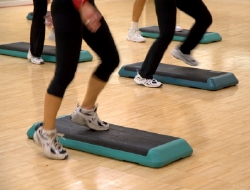
Running is one of the most popular and the easiest ways to get in shape and stay healthy. It is also one of the easiest ways to injure yourself and bring about serious running pain.
Running pain is common and typically affects the ankles, feet, hips and knees most often. The stress and impact of running is often tough on the joints and muscles of the body, especially if you keep going once running pain begins.
6 Possible Causes of Running Pain
Running pain can occur for a number of different reasons ranging from the terrain on which the runner is working out to the type of shoes he or she wears. It is important to stretch properly with each workout, wear the proper equipment, and pace yourself in order to prevent running pain and injuries such as:
1) Runner’s Knee
The IT band along the outside of the thigh becomes too tight and begins to run up against the outside of the knee causing inflammation and running pain.
2) Shin Splints
This is a common running pain that occurs on the front of the lower leg, to the inside of the shinbone.
3) Plantar Fasciitis
Overuse of the plantar fascia that runs from the heel and along the underside of the foot for support in the arch of the foot often results in running pain or injury.
4) Achilles Tendinitis
The Achilles tendon, which attaches the calf muscle to the heel, becomes inflamed from biomechanical problems or overuse.
5) Patellofemoral Pain Syndrome
This is a pain in the knee that occurs gradually and becomes worse when walking or running downstairs or downhill.
6) Anterior Compartment Syndrome
Swelling that occurs on the lower leg, on the outer area of the shinbone, causing great pain.
Tips On How to Prevent Running Pain:
The most effective way to avoid running pain is to prevent it. Here are some tips that will help both individuals who are new to running as well as those who are all too familiar with running pain:
- Stretching provides a great many benefits, including the prevention of running pain. Stretches such as the standing calf stretch and the standing quad stretch are effective in preventing injury while running.
- It is important to have the proper footwear to prevent running pain. When you shop for running shoes, always try them on before you make your final purchase. The shoes should fit your foot type, not too loose and not too tight. Walk around the store to ensure there is no rubbing anywhere that would lead to eventual blisters.
- Experienced athletes know the importance of a warm up before running and a cool down afterwards. Warming up properly will increase the flow of blood throughout your body to the muscles, decreasing any stiffness, reducing the risk of running pain or injury, and effectively improving performance.
- Cross train to mix up your exercise routine and surprise the muscles of your body to prevent running pain. If your body gets used to doing the same exercise program over and over the risk of pain is increased; mix it up to stay on a positive path toward health and fitness.
- Give your body a chance to rest and recover from exercise. It is important to give your muscles time to heal in between workouts in order to prevent running pain and injury.



Be the first to comment